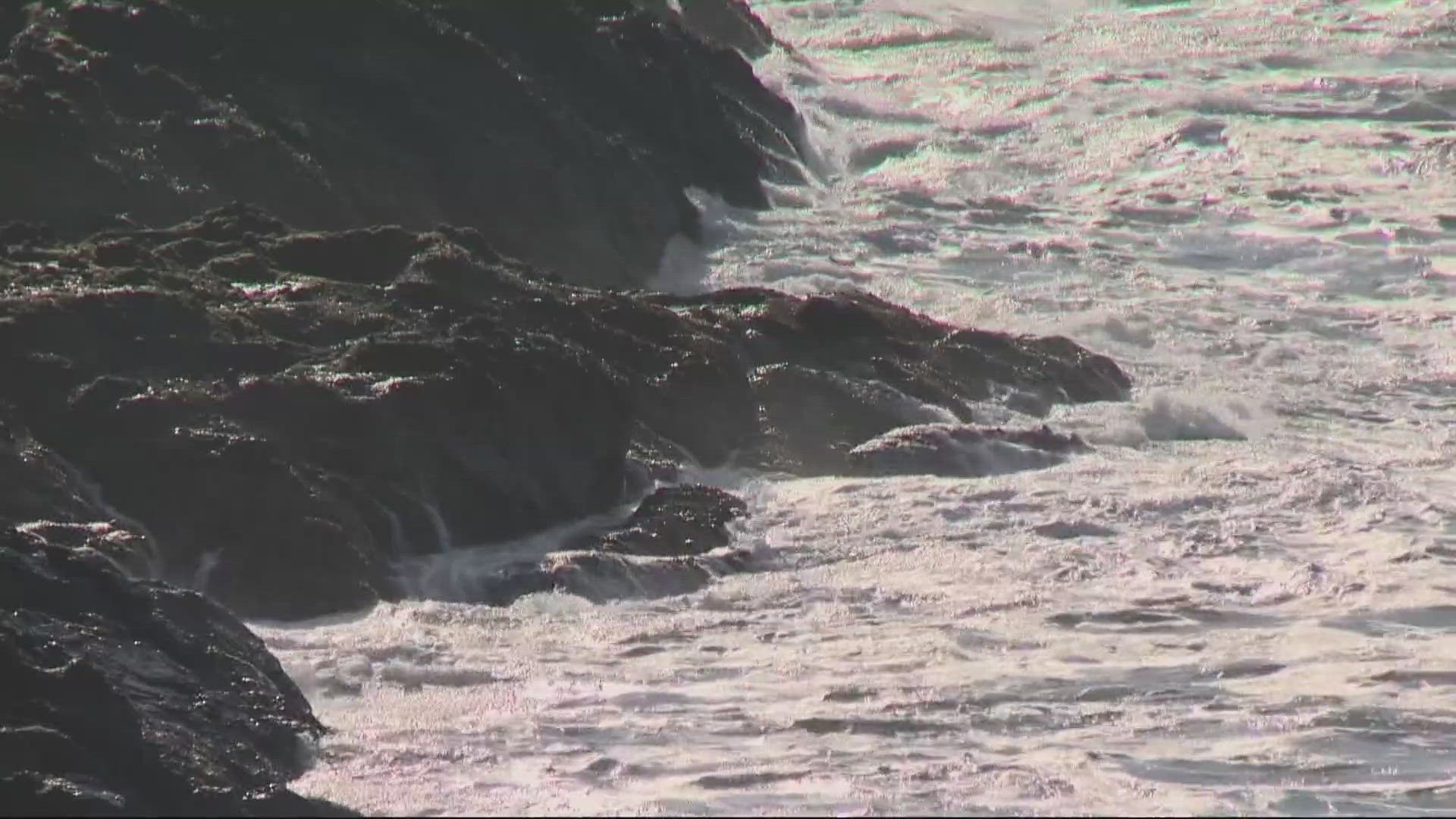PORTLAND, Ore. —
Some of the marine ecosystems off Oregon’s coast are ill-equipped to deal with climate change, according to a new study from researchers at Oregon State University.
The paper, published this week in the journal "Nature Ecology & Evolution," found that shifts in ocean conditions, coupled with a severe disease outbreak, have shifted the balance for rocky tidal areas.
Zech Meunier, a recent PhD graduate from the university and lead author of the study, said his team looked at changes to 13 sites along the northern California and Oregon coasts from 2006 to 2020. That allowed the researchers to collect baseline date from 2006 to around 2014, when conditions were relatively normal.
Then, everything changed.
“There had been a mass die-off of sea stars due to this outbreak of sea star wasting disease that occurred in 2014,” he said. “And then right after that, we saw very warm water in our rocky habitat systems.”
The wasting disease wiped out as much as 90% of sea stars in some areas and the heat wave, which came to be known as “the blob,” persisted for several years after it began in 2014.
Experts have found evidence that both events were exacerbated by climate change.
The wasting disease in particular had a profound effect on inter-tidal ecosystems, Meunier said.
“The adults sea stars are very important predators in this system. They're like the wolves of the inter tidal,” he said.
The disappearance of sea stars had a cascading effect.
Without sea stars, populations of the species they prey on — mostly invertebrates like barnacles and mussels — shot up, often taking the place of algal species like kelp.
Kelp forests were further pushed down by the marine heatwave, which raised water temperatures to levels too high for the kelp to survive.
“There are winners and losers,” Meunier said. “And in this case, the winners are species like barnacles and mussels and other sessile invertebrates, and the losers are the kelp and the sea stars.”
The change was profound enough that it led to what Meunier described as a “regime change” in certain areas.
“We had this die-off of kelp and this expansion of invertebrates like barnacles and mussels,” he said. “Those things together cause this transition from kelp-dominated to mussel- or barnacle-dominated systems.”
Resiliency in the scientific world can mean two things: it can refer to a species ability to resist a disturbance or a species ability to recover after a disturbance.
In the case of the areas Meunier studied, he said the ecosystems ranked low on both counts.
“We found that in many of our study sites, there was no resistance and even lower recovery, meaning low resiliency,” he said.
And there are parallels that can be drawn between what happens in the ocean and what happens on land.
Heat waves and disease outbreaks are not unique to the marine environment, Meunier said, pointing to the 2021 heat dome and the COVID-19 pandemic as examples.
“Humans, especially those of us who live in the Pacific Northwest, are experiencing environmental changes, too,” he said.
While there was little that human intervention could have done to stave off the marine heat wave and the wasting diseases in sea stars, Meunier said it was important for humans to recognize what we can do about our own environment.
“These stressors — disease, temperature and other climate change effects — are only going to accelerate,” he said. “The only things that we can really do is a systemic global change to reverse carbon emissions and to do our part individually and as a society to combat the effects of climate change.”

